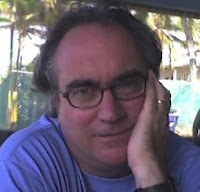Christine Dwyer Hickey published The Dancer in 1995. It is the first novel in her "Dublin Trilogy," the others are The Gambler (1996) and The Gatemaker (2000). She has since published two more novels: Tatty (2005), which may be her most successful work, about a child of alcoholic parents, and Last Train From Liguria (2009), like her earlier work an historical novel with an Irish woman as protagonist but set in early fascist Italy.
Dwyer Hickey brings a lot to the table and from reading this first novel I suspect she is considerably underrated. She is an ambitious historical novelist who is unafraid of a very big canvas. Structurally she is character-driven, a technique that has earned her a reputation as a "women's writer" although I thought of Dickens and James Plunkett. It is true that this is very much a woman's novel in the sense that the plot has to do with marriage and Austen-like tensions between propriety and personal fulfillment, and it conveys the sexuality of several women from their own points of view. I particularly liked the treatment of Greta, the smart and talented servant who doesn't think that she has much use for men but who just can't seem to keep her skirts down.
I was surprised reading the opening passages to realize that another central character, Kate, had a cleft palate, quite a decision for an author to make especially as this was Dwyer Hickey's first novel, but she has not written a freak show and one comes to appreciate Kate's condition as just another fact of life. Dwyer Hickey is not too rough with her characters and the one true villain is kept at arm's length. It occurred to me that Kate and her siblings, her older sister Maude and her younger brother "the dancer," might comprise a loose allegory for Irishness, Maude as tradition, Kate as damage and the dancer as anti-rational spirit, but that might be stretching a bit. Dwyer Hickey does aim for historical observation and commentary but she tends to keep this element well in the background. She is technically fastidious and careful to always show and never tell.
As to that, she is somewhat uneven stylistically. Perhaps this is by design. The social realism illuminated with internal monologues at times gives way to a much murkier, atmospheric exercise which is, I think, quite a bit more difficult to do well. It may be that Dwyer Hickey is using this mode for deliberate ambiguity; both the beginning and the end of the book have a pea-soup ambiance that is in pretty sharp contrast to, say, the internal narration of the sharp-witted Greta walking down the street.
I enjoyed this novel, from what I've seen Googling around a little I think I'll read Tatty when I get back to Dwyer Hickey sometime. A hard-working, underrated writer who is much more than "chick lit" to be sure.
Monday, January 18, 2010
Christine Dwyer Hickey's The Dancer
Labels:
Christine Dwyer Hickey,
Dancer The (1995),
Dublin,
Ireland
Subscribe to:
Post Comments (Atom)


No comments:
Post a Comment